Where he enhances learning with his green fingers and uses a makeshift whiteboard for effective modelling work
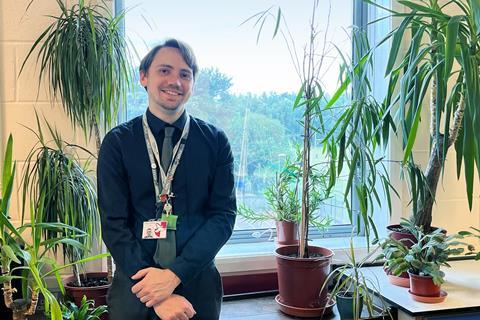
Meet Nathan Russell from Lawnswood School in Leeds, a local authority-maintained state secondary school with about 1500 students. Nathan graduated in 2013 and then spent two years running a fish and chip shop before deciding to go into education. Initially, he worked as a teaching assistant and school lab technician, gaining invaluable experience which ultimately inspired him to become a teacher. Nathan has been teaching for seven years now.
What do you teach?
I teach students from years 7–13, covering all three sciences at 11–14 and AQA combined science GCSE, as well as separate science biology and chemistry. I also teach our A-level chemists. We are transitioning to only teaching separate sciences at 14–16, so I’m looking forward to getting stuck in with a bit more physics.
Show us your teaching space
Want to share your teaching space? Then email us and your favourite space or display could feature in EiC online and in print.
Tell us about your classroom set-up
It’s been nice to have the freedom to rearrange things post-pandemic. The current set-up is five groups of tables accommodating six students each, clustered around the gas taps and plug sockets. The set-up makes it easy to complete practical work and it’s great for facilitating small-group discussion. As a department, we’re trying to have a consistent layout across our 13 labs to make seating planning easier for teachers who move between rooms.
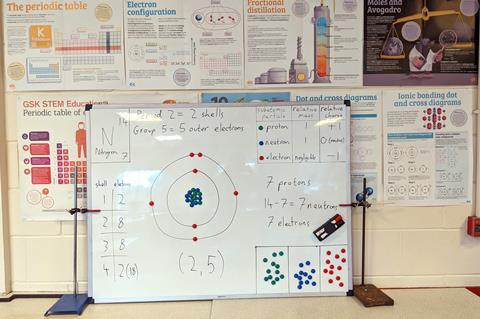
I have covered my cupboard doors with sticky-back whiteboard roll and also bought a second, portable whiteboard with magnetic discs – and these have been fantastic additions to my classroom. It’s always helpful to have extra board space when the main board is in use. I can keep key words up throughout a topic, or have hand-drawn diagrams ready to refer to during a lesson.
The magnetic board has been really useful for teaching concepts like atomic structure, as students can come up and build atoms on the board using different colours for the subatomic particles. I’ve always found electrolysis a difficult concept to teach, but being able to model the movement and reactions of different ions in this way has helped boost understanding of this topic.
What are you most proud of?
I feel like it’s known as ‘the one with all the plants in it’, although it’s debatable how good I am at keeping them alive! What started as one or two plants has grown into a small forest on one side of my lab. I think the plants enhance the learning environment, and it comes in handy to have a good variety of species around when teaching about structural adaptations. Students often ask me: ‘Sir, are all of those plants real?’
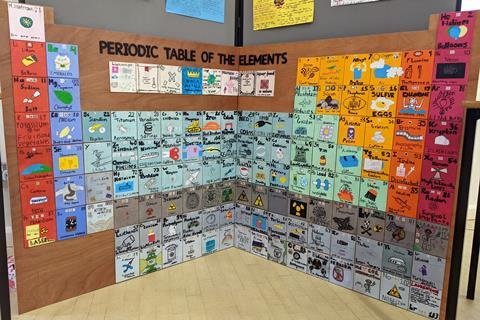
But the thing I’m most proud of is not actually inside my classroom; it’s a periodic table display our year 7 students and science club put together. Our head of teaching and learning organised an activity during our elements topic for year 7 – students worked in small groups to produce an element square each to add to the periodic table. Our science club then put it all together, backed onto wooden boards, to become a permanent display along the science corridor.
With an unlimited budget, what would you add to your classroom?
Just one thing? I’ve a short classroom bucket list …
Some built-in fume hoods would be nice, as it’s hard work dragging the mobile fume cupboards around – the other chemists are at the other end of a very long corridor. I’d love to have more sinks; distillation at A-level has always been a challenge in our labs due to the positioning and number of sinks.
I would change the position of the electricity supply emergency stop button, it’s right behind the door and I’ve lost count of the number of times that either I, or a pupil, have accidentally switched off my power!






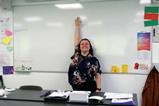
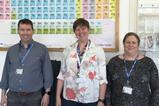






No comments yet